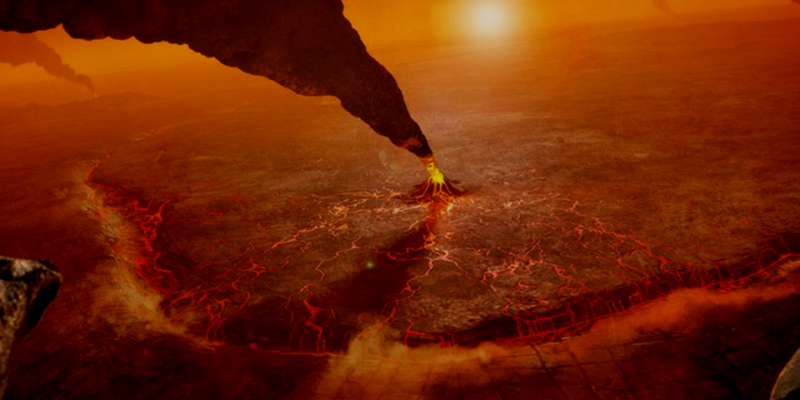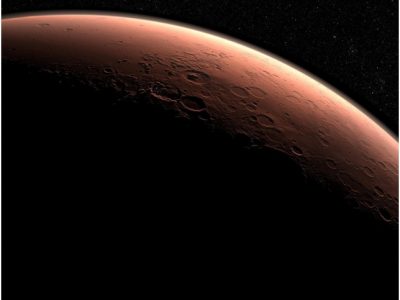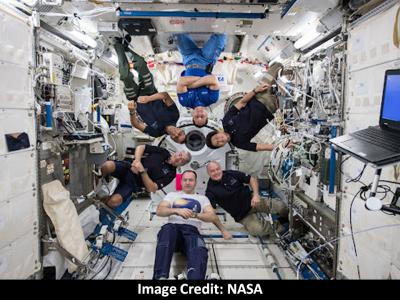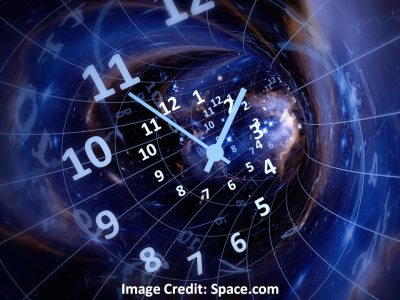
Both Earth and Venus are almost alike in terms of size, density, gravity, and surface composition. They are not identical twins means despite looking the same they are two worlds that are drastically different.
If Earth is heaven for life, Venus is a blistering hellscape.

Venus (Image Credits – NASA)
FUN FACT – Do you know Venus is the hottest planet in our solar system despite mercury being closest to the sun?
It has a surface temperature of about 900 degrees Fahrenheit, this temperature is enough to melt lead (Pb). Unlike other planets, it rotates backward on its axis. The surface has a rusty color and is peppered with intensely crunched mountains. Astronomers also think that there might be some volcanoes still active. These facts have created curiosity in the space sectors and make them think will there be life floating in the clouds of Venus.
Over the last few years, Mars has been dominating other planets in terms of research and explorations that’s why others are kind of ignored.
But NASA has brought Venus back in headlines by announcing two robotic missions which going to launch between 2028 and 2030 addressed by Bill Nelson, Administrator NASA.
These two missions are selected from 4 missions that Nasa picked in February 2020 as a part of the agency Discovery’s 2019 competition. These were chosen based on their potential scientific value and the feasibility of their development plans.
Decent Mission – DAVINCI+ (Deep Atmosphere Venus Investigation of Noble gases, Chemistry, and Imaging)

Decent Mission – DAVINCI+ (Deep Atmosphere Venus Investigation of Noble gases, Chemistry, and Imaging) (Image Credits – GeekWire)
The main objective of this mission is to measure the composition of Venus layer by layer to understand its formation and evolution. It will also determine whether the planet ever had an ocean. This mission includes a decent probe sphere that will be dropped in the dense atmosphere of Venus which is entangled with sulphuric acid clouds.
It will precisely measure the level of noble gases and other elements like phosphine to understand what gave rise to the runaway greenhouse effect found by astronomers lately and will be comparing it with Earth’s. Phosphine on earth is produced by microbes, if it is found at Venus then it could lead to the possibility that Venusian clouds could harbor life.
The mission will also return the first high-resolution pictures of the distinctive geological features of Venus known as tesserae which may be roughly comparable to earth’s continents suggesting that Venus has tectonic plates.
This mission is going to be the first US leading mission to Venus’ atmosphere. James Garvin of Goddard Space Flight Center in Greenbelt, Maryland is the principal investigator of DAVINCI+. NASA also selected a technology that will fly along with the mission, DAVINCI+ will host the Compact Ultraviolet to Visible Imaging Spectrometer (CUVIS) built by Goddard.
CUVIS can make high-resolution measurements of ultraviolet light by using a new instrument that is based on freeform optics. The observations taken by it will be used to determine the nature of the unknown ultraviolet absorber in Venus’ atmosphere that absorbs up to half the incoming solar energy.
The conclusion of this mission is to develop the scientists’ and astronomer’s understanding of the terrestrial planet formation so that they could further plan the missions to this planet.
Mapping the surface mission – VERITAS (Venus Emissivity, Radio Science, InSAR, Topography, and Spectroscopy)

Mapping the surface mission – VERITAS (Venus Emissivity, Radio Science, InSAR, Topography, and Spectroscopy) (Image Credits – NASA)
The main objective of this mission is to map the Venusian surface from orbit and explore the planet’s geological history. By using radar, it will chart surface elevations almost all over the planet to create 3D reconstructions of topography and confirm whether processes like tectonic plates i.e., earthquakes and volcanism are still taking place on Venus.
It will also map infrared emissions to determine the rock type which is largely unknown and whether the active volcanos are releasing water vapors into the atmosphere. The German Aerospace Center will provide the infrared mapper with the Italian Space Agency and France’s Center National d’Etudes Spatiales contributing to the radar and other parts of the mission.
Suzanne Smrekar of NASA’s Jet Propulsion Laboratory in Southern California is the principal investigator of VERITAS. JPL team has also built a Deep Space Atomic Clock-2 which will be flying along with the mission. This clock will act as GPS navigation in the mission.
Following NASA, the next ESA is ready to launch a mission to Venus called Envision to make a detailed observation of the planet. In the press, it is been released that NASA will be providing the radar to make high-resolution measurements of the planet’s surface features.
Who knows India is also planning a move toward Venus?
“It is astounding how little we know about Venus, but the combined results of these missions will tell us about the planet from the clouds in its sky through the volcanoes on its surface down to its very core,” said Tom Wagner, NASA’s Discovery Program scientist. “It will be as if we have rediscovered the planet.”
It is exciting to see that NASA has turned its planetary mission towards Earth’s largely forgotten twin sister. The information that can be gained by her will be of very high value for understanding our universe.
Author












